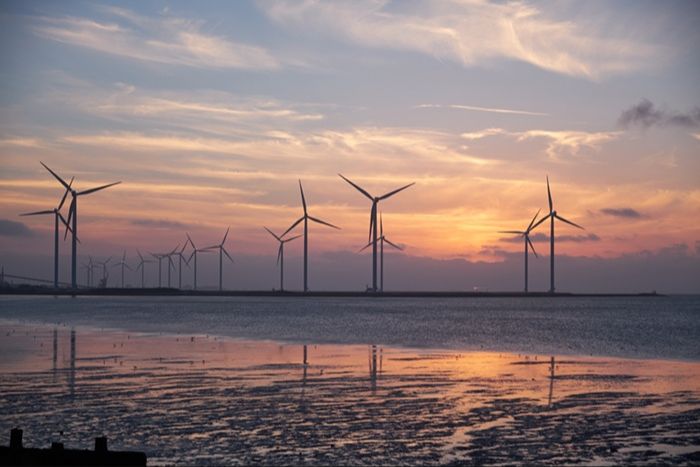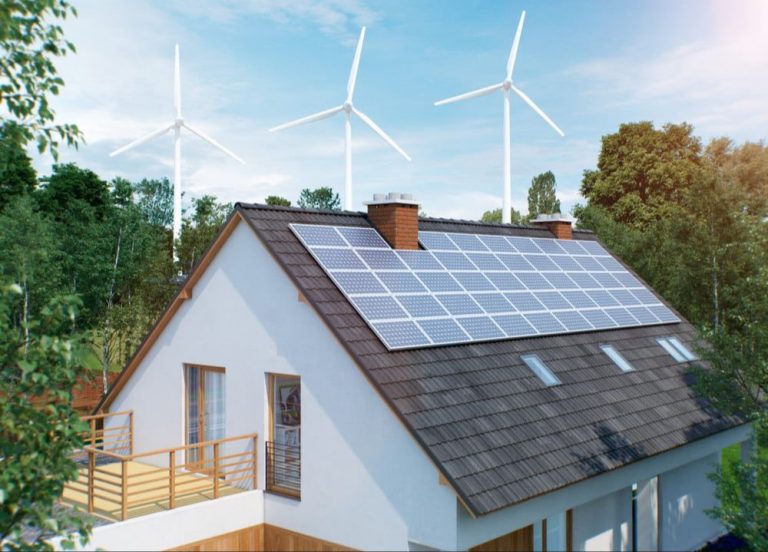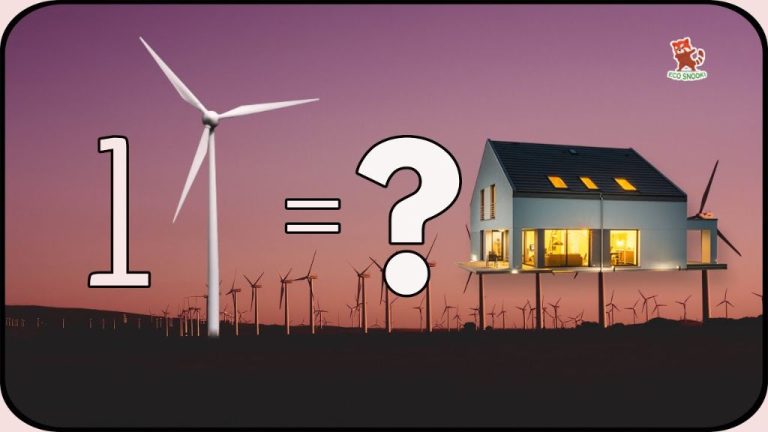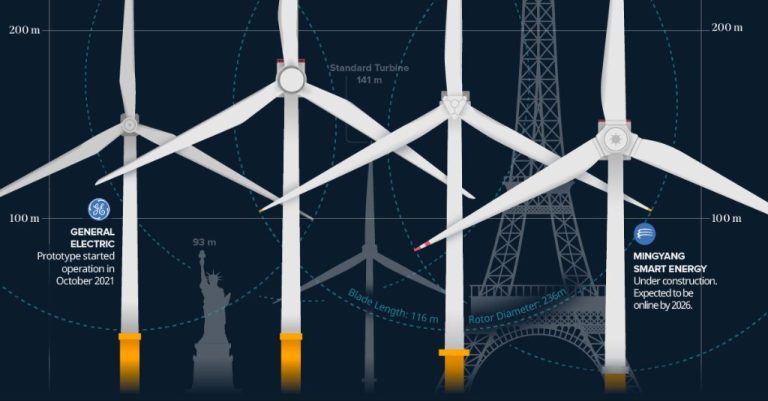What Is Power Law In Wind Engineering?
A power law is a mathematical relationship between two quantities, where one quantity varies as a power of another. In wind engineering, the wind profile power law describes the relationship between wind speed and height above the ground (Source).
The wind profile power law states that wind speed increases with height raised to a particular exponent, known as the power law exponent. This exponent characterizes the wind shear and is crucial for determining the wind loads on buildings and structures (Source).
Understanding power laws allows engineers to extrapolate wind speeds from measurement heights (like weather stations near the ground) to the heights of interest for design (like the top of a skyscraper). Properly accounting for wind shear and the power law exponent is critical for structural safety and serviceability.
History and Background
The concept of power laws originated in studies of turbulence and fluid dynamics in the early 20th century. In 1941, German physicist Theodore von Kármán first proposed a logarithmic relationship between wind speed and height above the ground, now known as the wind profile power law. This built on previous empirical observations by engineers such as William Froude that wind speeds tend to increase with height.
In the 1950s and 1960s, pioneers like John E. Cermak continued researching the physics of boundary layer flows. Cermak conducted extensive wind tunnel experiments and field measurements, deriving some of the first numerical values for power law exponents for different terrain types [1]. His work helped establish power laws as a standard model in wind engineering.
Later researchers like Surry, Davenport, Harris and Deaves further refined power law exponents and models through additional boundary layer research and full-scale monitoring of wind loads on structures [2]. Their findings demonstrated the utility of power laws for structural design, while also revealing complexities like stability effects on the exponent.
Today, power laws remain a core component of wind engineering, providing a simple but powerful mathematical model for estimating wind shear and loads as a function of height.
How Power Laws Work
Power laws describe the mathematical relationship between two variables where one variable varies as a power of another. In wind engineering, the power law is used to relate wind speeds at two different heights above ground level (AGL).
The wind speed profile follows a power law distribution in the atmosphere’s boundary layer, where wind speeds increase with height. The power law equation is given as:
Where:
- V1 = Wind speed at height Z1
- V2 = Wind speed at height Z2
- Z1 = Reference height
- Z2 = Height of interest
- α = Power law exponent
The power law exponent α typically ranges from 0.10 over smooth surfaces like water to 0.40 over very rough terrains. A value of 1/7 (0.143) is commonly used as an average for open country.
As an example, if the wind speed is measured as 5 m/s at a height of 10 meters with a power law exponent of 0.143, the wind speed at 80 meters height can be calculated as:
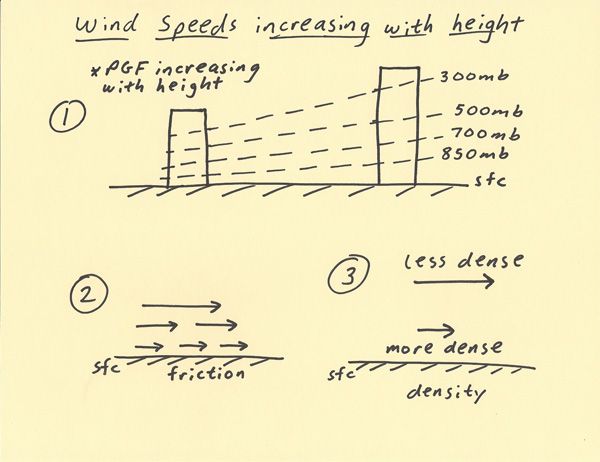
So using the power law, a wind speed of 8.94 m/s is estimated at 80 meters height based on the known wind speed at 10 meters height.
Applying Power Laws to Wind Speed
Power laws are commonly used in wind engineering to model how wind speed varies with height. The wind speed typically increases with height above the ground, and this vertical profile can be described using the power law equation:
V(z) = Vref * (z/zref)^α
Where V(z) is the wind speed at height z, Vref is the known wind speed at reference height zref, and α is the power law exponent which depends on the terrain roughness (https://repository.tudelft.nl/islandora/object/uuid:ed58420b-af86-48ea-be65-fcab9991902e/datastream/OBJ/download). The power law models the decrease in surface friction as height increases. The exponent α ranges from 0.10 over water to 0.40 in urban areas.
While useful, the power law makes assumptions of steady, horizontal wind flow. It does not account for wind gusts, turbulence, or changes over time. The wind profile can vary substantially, especially in complex terrain. The power law is therefore a simplified model for estimating average wind speeds (https://theses.hal.science/tel-02307977/file/82699_BUSSOLATI_2019_archivage.pdf).
Despite limitations, the power law provides a straightforward way to estimate wind loads and shear forces on structures. Wind tunnel testing and computational fluid dynamics can provide more detailed modeling of the complex wind environment.
Structural Analysis and Design
Power laws are crucial for analyzing how structures will respond to wind loads. By modeling wind speed using a power law equation, engineers can predict wind pressures on different parts of a structure. This enables calculating member sizes, stresses, and deflections needed for safe design.
The power law exponent is a key parameter, as it describes how wind speed changes with height. A higher exponent means wind speed increases more rapidly with elevation. Using wind tunnel testing, the exponent can be determined for a specific structure and location.
With the power law equation, the wind pressure is calculated at various points on the building facade. The pressures are integrated to find net forces in x, y, and z directions. Using finite element analysis, the force distribution enables calculating internal member forces and stresses.
Members are then sized to withstand these loads and stresses per building codes and standards. Proper application of power laws ensures structures resist strong winds and avoid dangerous vibrations. It allows optimizing designs for efficiency while maintaining safety.
For example, Smith et al. detail using power laws to analyze wind loads on a tall building design (Smith, 2022). By testing scale models in a wind tunnel, they derived a power law exponent for the site. This enabled accurate wind load predictions to size members and calculate stresses.
Wind Tunnel Testing
Wind tunnels are an essential tool used in wind engineering and aerodynamic testing. They allow for scaled model testing under controlled wind conditions [1]. Power laws play a key role in wind tunnel experiments by ensuring proper similarity between the model and full-scale conditions is achieved [2].
The idea behind wind tunnel testing is to replicate the actual wind flow patterns and forces that would be experienced by a structure at full-scale. However, it is not feasible to construct very large or full-scale models. This is where power laws come into play. The velocity profile in the wind tunnel can be matched to real atmospheric conditions using power law exponents. This allows accurate prediction of wind loading on small scale models [3].
While power laws enable important scaling laws, wind tunnel testing results still need to be carefully interpreted. Factors like Reynolds number, turbulence, and blockage can affect the accuracy of predicting full-scale wind effects. Therefore, wind tunnel tests serve as an important guide, but field measurements and prototype testing is still required for final verification.
Wind Load Safety Factors
Safety factors applied to wind loads are critical for ensuring the strength and durability of structures. Wind load safety factors account for variability and uncertainty in wind speeds and structural behavior. Power law exponents, which model how wind speed increases with height, are key inputs for determining wind load safety factors.
Building codes like ASCE 7 in the US prescribe minimum wind load safety factors that depend on the structure’s classification and exposure. For example, ASCE 7-16 requires a minimum safety factor of 1.6 for main wind force resisting systems in typical buildings (Source). Adjustment factors account for building height and exposure. Structures in open terrain or near large bodies of water generally require higher safety factors.
Wind tunnel testing can provide enhanced understanding of a building’s wind response to determine project-specific load cases and safety factors. However, testing is not required for all projects, as code-prescribed factors provide adequate safety for many common building types and geometries. Overall, safety factors based on power law models balance structural reliability with cost-effectiveness.
Power Law Exponents
The power law exponent is a key parameter that determines how wind speed changes with height. According to research from IAEA (https://inis.iaea.org/collection/NCLCollectionStore/_Public/37/121/37121604.pdf), the exponent value depends on the terrain roughness and surface characteristics. For open water or ice, the exponent is typically around 0.10. As the terrain gets rougher, the exponent increases. Typical values are around 0.14 for open terrain, 0.20 for suburban areas, 0.25 for urban areas, and 0.40 for city centers. The exponent can be even higher for very dense urban environments. Table 1 summarizes typical exponent values for different terrains.
| Terrain Type | Exponent Value |
|---|---|
| Open water/ice | 0.10 |
| Open flat terrain | 0.14 |
| Suburban | 0.20 |
| Urban | 0.25 |
| City centers | 0.40 |
Engineers must select the appropriate exponent when applying the power law. Using the wrong value can lead to inaccurate wind load calculations. The selected exponent value must match the terrain characteristics at the site.
Limitations and Challenges
While power laws provide a useful model for estimating wind speed profiles, they rely on some key assumptions that can limit their accuracy in practice. According to Wikipedia [1], power laws assume a steady wind flow and a neutrally stable atmosphere. However, real atmospheric conditions often deviate from these ideals.
As noted by Kikumoto et al. [2], power laws tend to overestimate wind speed under low wind conditions. This is because low wind speeds are associated with more unstable, turbulent atmosphere. The researchers found that the power law exponent needs to be adjusted based on stability conditions in order to improve accuracy.
Sisterson [3] also discusses issues applying power laws over complex terrain. Since power laws assume fairly uniform surface roughness, they may not capture effects of variable terrain on wind shear and turbulence. Using site-specific wind data through meteorological monitoring can improve power law estimates.
Overall, while power laws provide a useful starting point, engineers must account for atmospheric stability, terrain, and other local effects when applying them to estimate wind loads. Advances in meteorological modeling, wind tunnel testing, and sensor technology can help improve wind profile estimates beyond reliance on classic power law models alone.
[1] https://en.wikipedia.org/wiki/Wind_profile_power_law
[2] https://www.sciencedirect.com/science/article/abs/pii/S0167610516301659
[3] https://www.sciencedirect.com/science/article/abs/pii/0038092X83900828
Conclusion
In summary, the power law is a key relationship in wind engineering that allows engineers to estimate wind speeds at different heights above the ground. By raising wind speed to a power law exponent, the wind profile can be modeled and wind loads on structures estimated. Choosing the appropriate exponent is crucial for accuracy.
Power laws enable important wind tunnel testing and structural analysis using simulated wind speeds. Safety factors in building codes are derived from statistical analyses relying on power law modeling. While simple and useful, power laws have limitations in accuracy and precision. Advanced computational models continue to improve on the basic power law.
Overall, the power law provides a fundamental basis for wind engineering design, assessment of wind energy potential, and understanding wind flow behavior. As a long-standing principle in fluid dynamics, the power law will continue enabling progress in wind engineering for the foreseeable future.




